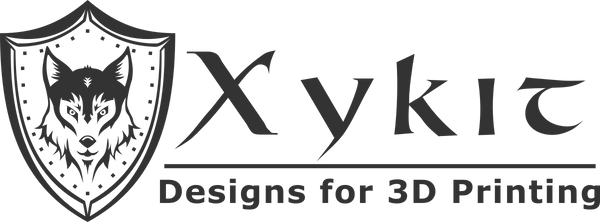If you're new to laser cutting, or are maybe just interested in lasers, I thought I would share some of the basics of laser cutting.
Should I buy a CO2 laser cutter?
If you already have a laser you can skip down to the next section.
Laser cutters are becoming more and more accessible. With machines like the Glowforge, Epilogue ZIng, and the Dremel Digilab, lasers have entered into the hobby market and are more user friendly than ever.
In my personal experience, my laser cutters are the most used tools in my shop. CO2 laser cutters are capable of cutting a vast array of materials very precisely and quickly. They can cut wood, acrylic, fabric, cardboard, paper, delrin and more. They can engrave on glass, stone and coated metals, among many other things.
I personally have a woodworking business so a laser cutter fit right in and has paid for itself very quickly. If you already have a business and are looking to expand and offer custom products, then a laser cutter will be a great addition. If you are a hobbyist and have a budget for another tool / toy, I don't think you will regret your purchase.
If you have never been around laser cutters, try checking out a local maker space and use their lasers to get a feel for it before taking the plunge.
How big should my laser be?
It really depends on what you will be making. Will you be making signs out of whole sheets of plywood, or will you be making smaller gift items? Start by analyzing what the biggest item you plan on making is and go from there. Starting small and growing is not a bad idea, but if you think you will be making larger items or simply want to make more items at once, the bigger the better.
How does a laser work?
The word laser is an acronym - L.A.S.E.R. ( Light - Amplification - by Stimulated - Emission - of Radiation)
A CO2 laser cutter, has a tube that emits a beam that is reflected by a series of mirrors (typically 2-3) into a focusing lens that can move on an X and Y axis to cut or engrave.

The unfocused beam from the laser tube is reflected to the laser head and directed down through a focusing lens.

Different lenses have different focal lengths. The longer the focal length the thicker the material you can cut, but the more power you will need. Standard focal lengths range from 1 inch to 4 inches. The beam is focused into an hour glass shape and creates a small area that is in focus called the focal plane.

This focal plane is the area that will actually do the cutting or engraving. Many machines have an automatic focus, but it is important to understand how the beam cuts in order to address issues with cut lines being too thick.
Maintenance
Laser cutters can be needy machines. No matter what kind of laser you have you will need to be preforming regular maintenance to keep your machine working properly.
When cutting, lasers produce a fair amount of smoke. Over time many of the surfaces will begin to collect a coat of grime. This grime can be easily removed with a a rag and some degreaser such as "Simple Green" or vinegar.
The mirrors and lens will also require cleaning to make sure the beam is getting through unobstructed. I like to use a solution of Denatured Alcohol and water. This can be used with a q-tip to gently clean the polished surfaces.
Do I need anything else for my Laser?
Yes, in order to operate a laser cutter you will need:
- a computer to tell the laser what to cut
- An exhaust fan, to extract smoke / fumes
- A cooling system for your laser tube. (water or air, depending on your machine)
Something to make...
Now all that's left is to make something. You can use programs like, Illustrator, Inkscape, Corel Draw, or Fusion 360 to design your own files, or you can check out pre-designed files to get started.
I hope you found this information helpful, please feel free to ask your questions in the comments below.

